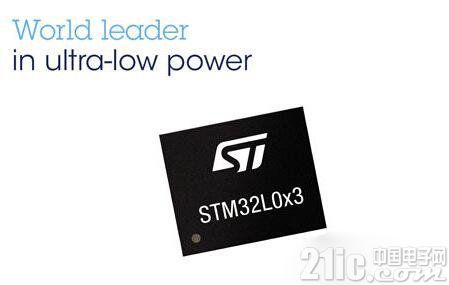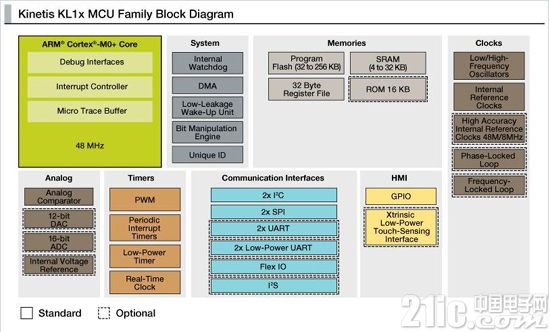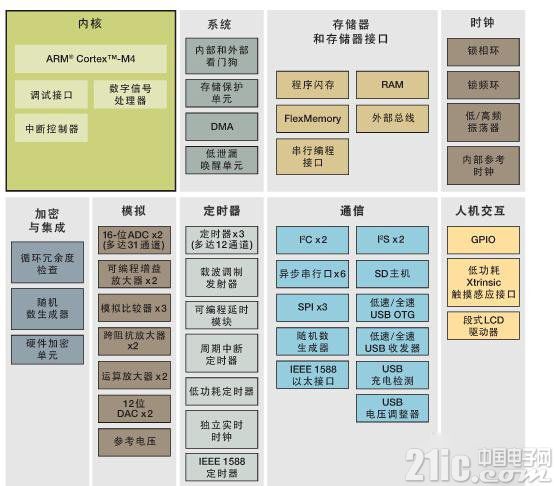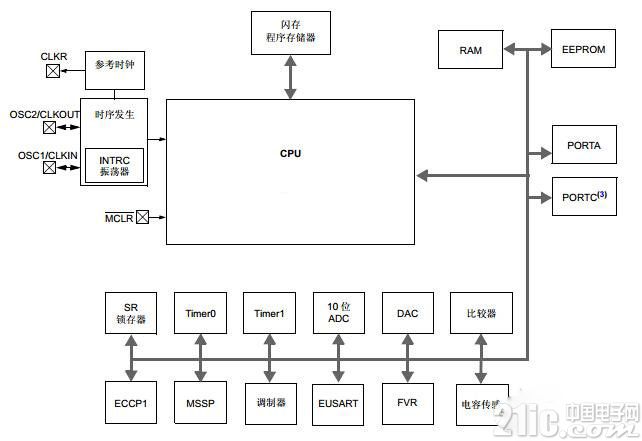Wearable medical care is the most popular wearable device application for the industry. With the expansion of Internet technology, smart medical care will gradually move toward people. However, there are still many technical difficulties in the design of wearable medical devices. How to realize the low power consumption, portability and stability of the device is still the primary problem that the technician needs to solve.
This article refers to the address: http://
MCUs can meet the needs of most wearable devices. In addition, the latest MCUs can integrate most of the functions in a single chip, which is important to reduce the overall size and BOM cost of the wearable device. It can be said that the MCU directly determines the overall performance of the device. In view of this, the author has specifically integrated 10 mainstream wearable medical MCUs (in no particular order).
First, the ideal choice for TI MSP430FG47x wearable medical
Texas Instruments (TI) is committed to revolutionizing the future of medical electronics to improve the quality and ease of use of medical devices. TI is working hard to innovate innovative medical electronics, continuously improving flexibility and ease of use, and striving to reduce costs
TI's MSP430FG47x ultra-low-power microprocessor (MCU) product family meets the needs of engineers who deliver low-power, high-performance, and targeted peripheral integration to help them develop reliability quickly and efficiently. Medical equipment with advantages such as convenience and low cost. The FG47x MCU enables on-chip integration of the complete signal chain, which reduces design complexity and saves space and cost. These devices will help developers improve the quality of their medical services and ease of use, meeting the needs of a variety of products including blood glucose meters, digital body surfaces, pulse oximeters, and blood pressure/heart rate monitors.

Key features and benefits of the MSP430FG47x
Integrated on-chip signal chain including two configurable op amps, 12-bit digital-to-analog converter (DAC), comparator, and 16-bit analog-to-digital converter (ADC) to reduce board space and bill of materials Cost, but also accelerate the time to market;
· 16-bit Σ-type ADC to meet the needs of high-resolution signal conversion applications;
· 128-segment LCD driver with contrast control for convenient diagnostic display;
· Provides a variety of memory options: up to 60KB of flash memory and 2KB of RAM to meet the convenience of programmability requirements;
· The ultra-low power consumption of the MSP430 MCU improves portability and battery life is over 20 years;
· The integrated intelligent peripherals of the MSP430 MCU provide high performance and achieve zero power consumption in non-operating states;
Two package options to meet the various printed circuit board (PCB) size requirements: 80-pin QFP or 113-bump BGA, only 7.1 mm x 7.1 mm.
The FG47x device is the latest addition to TI's line of MCU products for medical applications. TI offers a full range of embedded processing and complementary analog solutions to help designers create cost-effective medical products with greater flexibility and convenience for improved diagnostics and ease of use. The ultra-low power consumption of TI's MCU solutions increases portability for easier chronic disease monitoring and treatment.
Second, Silicon Labs efm32 gecko construction ultra low power system
Silicon Labs is very optimistic about the broad market prospects of the Internet of Things, which is the area where Silicon Labs is fully committed; and a series of high-quality products for wearable devices and smart homes, and a new SoC at the end of last year. It will have ultra-low power consumption, support and integrate multiple protocol standards such as Zigbee and Bluetooth, and is very suitable for IoT products such as wearable medical.
Features:
Up to 128 kB of flash and 16 kB RAM
· Up to 90 GPIOs with a drive strength of 20 mA
Flexible energy management system with 5 different energy consumption modes
Hardware AES, 128/256 bit encryption and decryption
·Applicable to autonomously operating peripheral reflection systems
Ultra-low power accuracy and analog peripherals
· USART with UART and SPI modes up to 16 Mbps
Low energy UART with 100 nA receive mode
• 16-bit timer/counter with compare/capture function

Silicon Labs' EFM32 Gecko 32-bit Microcontroller (MCU) family includes 25 devices with up to 128 kB, 8–16 kB of RAM, and a CPU configuration up to 32 MHz. Based on the powerful ARM Cortex-M3 core, the Gecko family features innovative low-power technology, reduced power-up mode wake-up time, and a wide range of peripherals, making it ideal for battery-powered applications and other systems that require high performance and low power.
Third, STMicroelectronics' first M0+ MCU STM32L0, challenge the opponent's killeré”
This year, ST unveiled a new line of 32-bit general-purpose microcontrollers that will significantly extend the battery life of healthcare devices. The STM32L0 ultra-low power family of microcontrollers is based on a 32MHz ARM Cortex M0+ processor core with a 12-bit analog-to-digital converter (ADC) and a USB FS 2.0 crystalless solution.
The new family of STM32 microcontrollers enables customers to achieve unprecedented low power consumption, integrate the energy-efficient ARM Cortex-M0+ core, optimize architecture, power management modes, ultra-low-power peripherals, support for energy-efficient USB functions, and unique ultra-super Low power manufacturing process.

The product's internal analog-to-digital converter sets a new low-power standard that consumes only 40μA at 100ksps conversion rate and only 200μA at 1.14Msps. Combined with the superior energy efficiency of the processor core and the ultra-low power consumption of the peripherals, the new family of microcontrollers will reduce the battery replacement rate of non-rechargeable battery-powered devices such as fitness trackers and home smoke detectors. Save end-user spending and the environmental impact of used batteries. For example, a fitness tracker using a non-rechargeable coin battery can last up to 2 years after switching to the STM32L0.
Another big advantage of this family of microcontrollers is the ability for device manufacturers to design smaller end products that reduce product size and product price. For example, blood glucose meters and portable medical instruments and fitness equipment with an ever-increasing variety of products. In addition, the new series uses ST's unique CMOS manufacturing process, which not only provides embedded EEPROM memory, but also achieves the industry's smallest power consumption variation in the 25 ° C - 125 ° C operating temperature range, creating a high temperature environment The internal power consumption is new low.
Four & Five, Renesas Two MCUs for Wearable Blood Pressure Monitors
As a representative of electronic medical products, blood pressure monitors have rapidly spread in many families in recent years. With the widespread use of the upper-arm blood pressure monitor, the demand for a wrist-type blood pressure monitor that can be easily measured is increasing, and the miniaturization of the device and the life of the battery are particularly necessary. In addition, in order to measure the sharing of data, and wherever data can be called up, it is necessary to strengthen the communication function of the computer or mobile phone and USB/Bluetooth to the general network.
Depending on the long life of the battery, or the miniaturization of the device, the number of batteries required can be reduced, and thus low power consumption is required. Renesas has a rich line of MCUs, including the R8CLx's built-in LCD low-power 8-bit MCU and the R8C/Lx series with built-in LCD driver control circuitry. It inherits many of the peripheral functions of the R8C/3x family of products (such as multi-function timers and various communication functions) and the easy-to-use LCD driver control circuit in the 38000/740 and H8/300L ultra-low power series.
The 78K0R / LX3 microcontroller is a 16-bit microcontroller microcontroller. It includes 78K0R CPU core and peripheral functional devices such as ROM/RAM, LCD controller/driver, A/D, D/A converter, operational amplifier, multi-function serial interface, multi-function timer, real-time counter, and watch Door dog timer.

78K0R / LX3 functional block diagram
Both MCUs have built-in LCD driver control circuitry for low power consumption and include peripheral functions required by the blood pressure monitor, reducing the external components of traditional blood pressure monitors and further reducing design costs.
Six, ADI wearable wireless ECG monitor precision analog MCU
Traditional ECG monitors usually require a carry-on monitor to be placed close to the patient's neck or wrist pocket, and the noise and interference of the wireless ECG monitor is greatly reduced, and the size can be reduced to even the back of the electrode. Provides more accurate signals than traditional solutions. This circuit is inexpensive and provides a diagnostic quality 1 lead ECG trace that eliminates the need for a 60 Hz notch filter. All circuits can be worn in the clothes, so patient comfort and privacy are greatly improved.
ADI's Precision Analog MCUs - the ADuC7026 integrates a 1 MSPS, 12-bit, multi-channel, high-performance ADC data acquisition system and 16/32-bit MCU and Flash/EE memory in a single chip. Among them, the ADC has up to 12 single-ended input channels, and there are 4 ADC input channels that can also be multiplexed with the output pins of 4 DACs; the MCU core is ARM7TDMI, which is a 16-bit/32-bit RISC machine. Its peak performance is as high as 41 MIPS. On-chip integrated 8KB SRAM and 62KB non-volatile Flash/EE memory. Low power consumption and high integration make the ADuC7026 high-precision MCU ideal for use as a control center for wireless ECG monitors.

Functional Block Diagram for ADuC7026
Seven & Eight, Freescale's two MCUs for wearable wireless healthcare patches
Wearable Wireless Patch is an all-in-one monitoring tool that measures heart rate, breathing patterns and other vital signs. This patch is suitable for clinical and personal healthcare applications. SMD-based healthcare products increase patient mobility and comfort, and wirelessly upload vital signs data to the cloud for real-time analysis or long-term retention of records. Freescale offers a rich, low-power, low-cost MCU solution for this application:
The Kinetis KL1x family of ARM Cortex-M0+ MCUs offers ultra-low power performance, rich analog, communication, timing and control peripherals and is compatible with the Kinetis K10 MCU family based on the ARM CortexTM-M4 core.

Kinetis K50 ARM Cortex-M4 microcontroller with integrated analog front end. The K50 microcontroller features an ultra-low power design that integrates critical peripherals such as capacitive touch sensing hardware to meet the diverse requirements of healthcare devices. In addition to the above features, the device integrates an industry-standard, high-performance 32-bit ARM Cortex-M4 CPU that supports DSP instructions and is part of a family of devices with 32KB to 1MB of integrated flash memory.

Kinetis K50 functional block diagram
Nine, US letter for vital signs monitoring service low-power MCU
The Vital Signs Monitoring Service (Fit) enables healthcare professionals and users who are eager to learn about their health to monitor vital signs at low cost. The highly integrated monitoring suit is designed to measure three-lead electrocardiogram (ECG), body temperature and motion status. All diagnostic tools are integrated into the inside of the shirt without affecting wearing comfort.
The new intelligent monitoring service integrates dry-electrode ECG measurement technology, complex signal processing technology, temperature sensor, motion sensor, ultra-low-power microcontroller and wireless communication unit. It is the experience of Maxim Integrated, Clearbridge VitalSigns and Orbital Research. The results of active cooperation at the level of technology and innovation.
Among them, the MAXQ622, a 16-bit MCU with infrared module and USB function, introduced by Maxim, includes low-power, high-throughput, 16-bit RISC architecture, 128KB flash memory and 6KB data SRAM, and has ultra-low power stop mode. (0.3 μA, typical). In this mode, only a few circuits remain powered. Wake-up sources include external interrupts, power-fail interrupts, and timer interrupts. The microcontroller operates over a wide operating voltage range of 1.70V to 3.6V and can also be powered by USB.

MAXQ622 schematic
X. Mircochip's MCU for iontophoresis placement equipment
Nicotine patches and anti-halation patches are wearable products that are familiar to the public. These products lay the foundation for a new generation of electronic products. Among them, iontophoresis patch is an emerging application in a new generation of electronic products.
With the development of electronic technology and low-cost, high-performance MCUs, it has become possible to produce low-cost disposable drug dispensers; many consumers are already using self-service iontophoresis products, but designers are designing iontophoretic patches. Devices face many challenges, the biggest of which is the creation of key electronic components into wearable components that can be discarded after one use, so the placement electronics must be relatively inexpensive.
The device must generate enough voltage to maintain the current required for a particular implant dose for a specified period of time in order for the drug to complete through the skin. The boost regulator is used to raise the low voltage of the battery to a sufficient level to allow the required current to pass through the skin. The electronic chip component can be powered using a low cost button-type lithium battery or an alkaline battery. To meet both cost and functional requirements, you need a small, highly integrated MCU.
Microchip's 8-bit MCU, the PIC12F1822, is available for this device with an internal 10-bit ADC, fixed reference voltage, comparator, PWM, hardware timer and EEPROM to meet the design integration requirements. The fixed reference voltage eliminates the need for a voltage regulator or an external voltage reference and keeps the design within the 8-pin MCU range to reduce cost and board size.

Stadium Lights are the perfect high efficiency lighting solution for any sport application.Our Sports Field Lighting is 50% brighter & save 70% on energy.Led Stadium Lighting for sale is ideal for lighting up sport courts, such as tennis courts, basketball courts, or football stadiums.Our Led Stadium Lights can withstand tough weather conditions.Led Stadium Flood Light is designed for a direct replacement for Stadium Lighting, Football Fields, Soccer Fields, Tennis Courts, and Hockey Arenas. Indoor / outdoor stadium and arena LED lighting designed to replace energy inefficient HID fixtures at Light Poles.

Stadium Lights
Sports Field Lighting,Led Stadium Lighting,Led Stadium Lights,Led Stadium Flood Light
Shenzhen Bbier Lighting Co., Ltd , https://www.chinabbier.com
